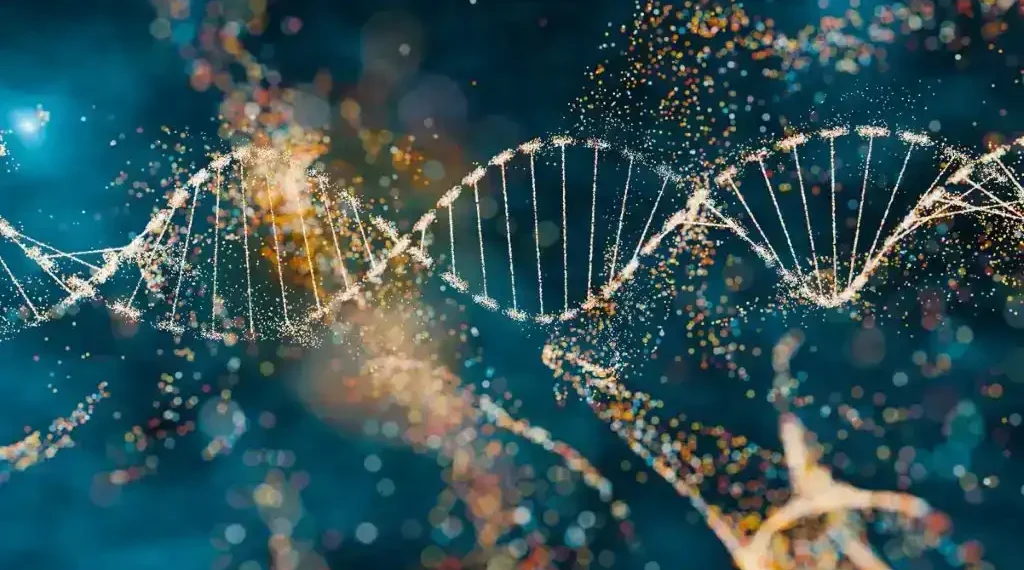Ancient Viral DNA Plays Key Role in Human Development and Evolution, Researchers Say
Published Time: 08-10-2025, 14:00 (U.S. Eastern Time)
A new study published in Science Advances highlights the surprising role ancient viral DNA embedded in the human genome may play in early development and evolutionary processes. These viral remnants, long considered useless “junk” DNA, are now recognized as crucial components in gene regulation and could shed light on how humans evolved.
Understanding Ancient Viral DNA in the Human Genome
About 8% of the human genome consists of DNA sequences from ancient viruses that integrated into our ancestors’ chromosomes millions of years ago. These sequences reside within transposable elements (TEs), also known as “jumping genes” for their ability to move within the genome.
While TEs make up nearly half of our genetic material, they were historically overlooked as non-functional. However, recent research led by Dr. Xun Chen at the Shanghai Institute of Immunity and Infection and Dr. Fumitaka Inoue from Kyoto University has uncovered that specific TE subfamilies actively regulate gene expression, especially during early human development.
The Role of Transposable Elements in Gene Regulation
TEs have been difficult to study due to their repetitive and complex nature. The new study focused on a subset called MER11 sequences, which are found across primate genomes. Researchers discovered four previously unidentified subfamilies, including MER11_G4, which strongly activates genes in human stem cells and early neural cells.
This activation indicates that viral TEs influence how genes respond to developmental signals and environmental factors, potentially shaping the earliest stages of human growth.
Implications for Human Evolution and Disease
The study also traced how these viral sequences evolved differently among species, including humans, chimpanzees, and macaques, suggesting that viral TEs contributed to species-specific evolutionary changes.
“This research offers a new window into what makes humans unique and may help us better understand genetic diseases,” said Dr. Lin He, a molecular biologist at UC Berkeley who was not involved in the study. He emphasized that some ancient viruses have been “domesticated” by the genome to aid evolutionary innovation rather than acting solely as harmful elements.
Further, understanding TE activity could open pathways for gene therapies targeting these sequences and improve cancer treatments, as some TEs have been implicated in disease processes.
Challenges and Future Directions
Despite these advances, much remains unknown about the full extent of TE functions. Their repetitive nature complicates classification and study, and other undiscovered TEs may also play vital roles.
Dr. Steve Hoffmann, a computational biologist at the Leibniz Institute on Aging, noted that while the human genome has fewer TEs than some other species—like the Greenland shark, whose genome is over 70% jumping genes—the findings underscore the importance of these sequences across life forms.
“Studying these elements can help explain why humans develop certain diseases and lead to novel therapies,” Hoffmann said.
Conclusion
The new research reveals that ancient viral DNA embedded within human chromosomes is far from useless. Instead, these sequences actively regulate gene expression during development and have contributed to evolutionary changes that shaped modern humans.
As genomic research progresses, the functional roles of these “jumping genes” may unlock crucial insights into human biology, disease, and evolution.
This article was rewritten by JournosNews.com based on verified reporting from trusted sources. The content has been independently reviewed, fact-checked, and edited for accuracy, neutrality, tone, and global readability in accordance with Google News and AdSense standards.
All opinions, quotes, or statements from contributors, experts, or sourced organizations do not necessarily reflect the views of JournosNews.com. JournosNews.com maintains full editorial independence from any external funders, sponsors, or organizations.
Stay informed with JournosNews.com — your trusted source for verified global reporting and in-depth analysis. Follow us on Google News, BlueSky, and X for real-time updates.













